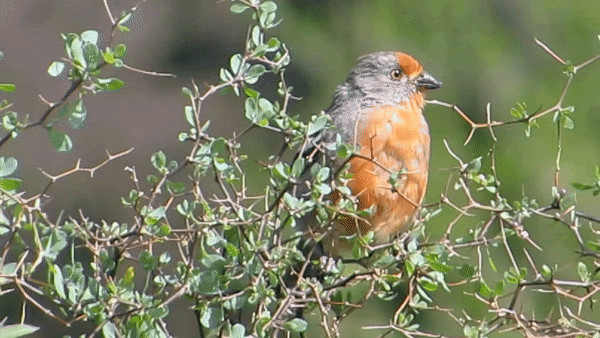March 5, 2020 report
Researchers estimate size of bird with unusual vocal biomechanics by its song

A team of researchers from Universidad de Buenos Aires, Museo Argentino de Ciencias Naturales and the University of Münster accurately estimated the size of a white-tipped plantcutter bird by studying nothing but its song. In their paper published in the journal Physical Review Letters, the group describes their study of the unique bird and is raspy cry.
The white-tipped plantcutter is a songbird found in the scrub and woodlands of south-central and south-eastern South America. It is a member of the Cotingidae family, is sexually dimorphic and eats mostly leaves. What makes it truly unique, however, is how it produces its songs.
Most animals, including humans, make sounds by pumping air from the lungs through vocal folds (cords) forcing them to vibrate—muscles in the larynx control the tension of the cords, allowing for the production of sounds with different pitch and tone. With the plantcutter, things are quite different. Prior research has shown that when the bird wants to create a song, it allows air to build up behind its vocal folds to a certain point, and then suddenly allows them to release the captured air. Doing so results in a burst of energy that produces a pulse that resonates around in the oroesophageal cavity—a chamber inside of the bird's body. The result is a raspy cry. Stringing cries together results in a song.
Noting that the sound that emerged from the oroesophageal cavity would be impacted by its size, which in turn would be dependent on the size of the bird, the researchers wondered if it might be possible to estimate the size of a given bird by measuring the frequency of the songs it produced. To find out, they studied the physical characteristics of the oroesophageal cavity and developed a mathematical theory to describe the sounds that would be created under various scenarios. They tested their theory by measuring tarsus lengths in birds found in museum specimens and noting the acoustic properties of songs that have previously been recorded and stored in databases. They report that they were, indeed, able to predict bird size by analyzing songs.
More information: Unusual Avian Vocal Mechanism Facilitates Encoding of Body Size, Physical Review Letters (2020). journals.aps.org/prl/abstract/ … ysRevLett.124.098101
Journal information: Physical Review Letters
© 2020 Science X Network




















